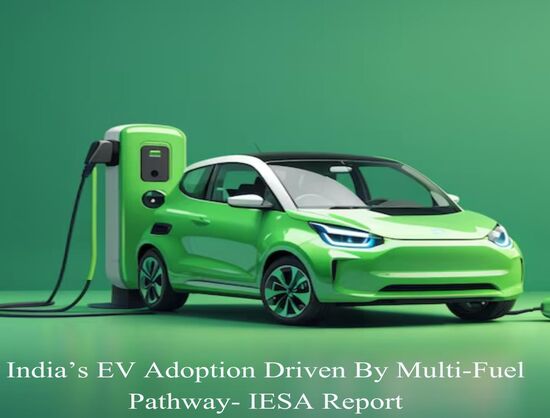The IESA e-mobility report highlights India’s growing shift toward electric and alternative fuel vehicles, underscoring policy support, state-level initiatives, and a multi-fuel approach shaping sustainable mobility across the nation.
October 26, 2025. By EI News Network
The India Energy Storage Alliance (IESA), through its e-mobility initiative, the India Electric Mobility Council (IEMC), has released the ‘Automotive Electrification in India Market Report’, highlighting key trends shaping India’s automotive sector.
As the world’s fourth-largest automobile producer, India is well-positioned to become a global leader across the automotive value chain. The sector is at a critical juncture, with electrification and sustainable mobility reshaping vehicle powertrains and the broader ecosystem. While petrol and diesel remain dominant, alternative fuels are gaining ground, driven by enabling policies and growing consumer awareness, signaling that sustainable mobility is becoming a tangible reality.
State governments are actively supporting this transition, offering incentives for local EV manufacturing, investing in charging infrastructure, and developing dedicated mobility clusters. Such measures highlight the importance of coordinated policies that align central and state-level strategies to boost electric vehicle adoption.
The IESA report emphasises India’s multi-fuel, multi-path approach. Alongside e-mobility, compressed natural gas (CNG), hybrid, flex-fuel, and hydrogen-powered vehicles are seeing increasing traction, each catering to specific use cases. The updated Corporate Average Fuel Efficiency (CAFÉ 3) draft norms, effective April 1, 2027, introduce volume-based incentives for manufacturers to increase sales of zero and low-emission vehicles, further encouraging the shift toward sustainable mobility.
Debmalya Sen, President of IESA, noted, “Policy is crucial in steering India’s shift toward environmentally friendly mobility and shaping consumer demand. Adoption remains uneven, with states like Uttar Pradesh, Maharashtra, Karnataka, and Tamil Nadu leading EV sales, accounting for over half the national volumes.” He added that while some regions are advancing directly toward Zero Emission Vehicle (ZEV) adoption, others follow a phased approach using alternative fuels as a bridge. This multi-path strategy reflects differing market maturity, readiness, and local priorities across states.
As India moves toward its Net Zero goals, balanced demand- and supply-side interventions, coupled with technology-neutral policies, will be essential to promote all environmentally friendly mobility solutions.
Images are for reference only.Images and contents gathered automatic from google or 3rd party sources.All rights on the images and contents are with their legal original owners.

